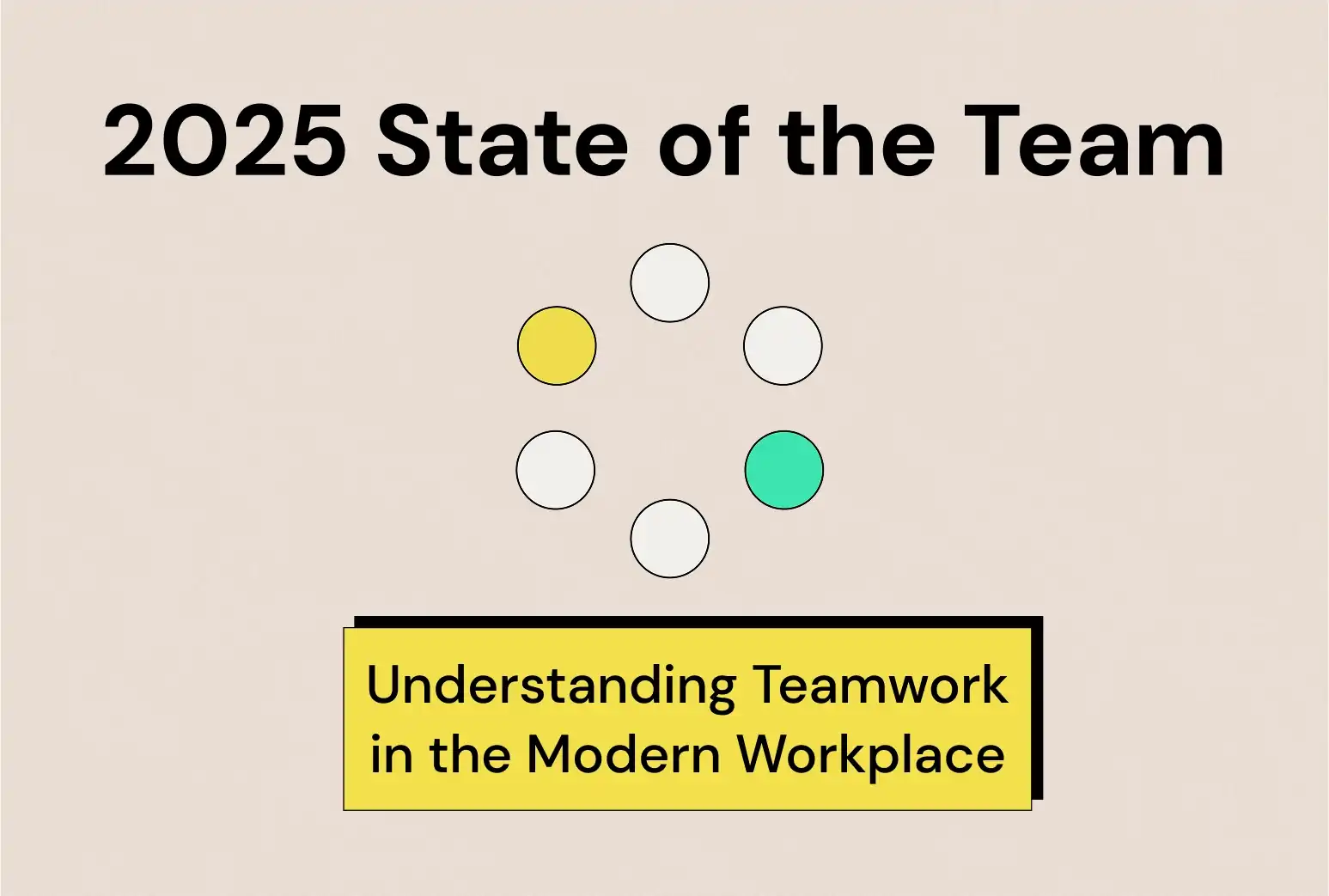Countless studies (not to mention common sense) have shown that high-performing teams get more done and have more fun. So what makes a team “high-performing?”
Who is on a team is important, but how they work together – sometimes referred to as “team chemistry” – matters just as much. Yet too often we look at team chemistry as something mysterious; a characteristic that emerges magically after you toss the right mix of different personalities into the melting pot of a team.
However, there’s a better way to understand how teams work together.
High-performing teams get more done and have more fun
The statistics are clear: high-performing teams get more done and have more fun while doing it.
McKinsey’s studies have repeatedly shown the relationship between team performance and both team and individual output:
- Top-performing leadership teams are 200% likelier to generate above-average results
- People are five times more productive when working in a high-performing team than they are in an average one
And it’s not just about getting work done. Members of high-performance teams also enjoy their work more. Psychologists studied 1,004 employees over five years and showed that high-performance contributes significantly to an individual’s satisfaction with their work.
Seems like a good thing, so it’s no wonder that team performance has consistently been among the top business topics of the past 40 years. But what drives team performance?
{{inline-cta}}
Who is on your team is important, but how they work together matters just as much
It is obvious that who you have on your team matters for overall team performance. However, team composition is necessary but not sufficient to create a high-performing team.
Consider the experience of one of the “greatest sports teams ever,” the 1992 U.S. Olympic Men’s Basketball Team. As they prepared to go to Barcelona for the Summer Games, this group of already-legendary professional basketball players (including Michael Jordan, Magic Johnson, Larry Bird, plus a who's-who of other star players) practiced against college players in California.
And by practiced, we mean lost – 62 points to 54. Why?
“These young kids were killing us,” Scottie Pippen explained later, “[because] we didn’t know how to play with each other.”
Ultimately, they figured out their team chemistry: the team took home the Olympic Gold medal, winning their games by an average of nearly 44 points, and earned the nickname the “Dream Team” along the way.
Yet too often we see “team chemistry” as something mysterious – magic you hope happens after you toss the personalities of the team into a pot, stir them around, and wait to see a spark. There has to be a better way.
Fortunately, there is. And it starts with understanding your team dynamics.
Team dynamics are the objective way of looking at how teams work together to accomplish goals
Team dynamics are defined as how individuals on a team interact with each other to accomplish common goals, and how those interactions impact the team’s overall performance (they’re sometimes also referred to as “group dynamics”).
Until the 1940s, social scientists believed that group behaviors could be completely predicted by assessing and aggregating the personality traits of individuals. The psychologist Kurt Lewin, now considered the “founder of social psychology,” flipped this conventional wisdom on its head when he demonstrated in 1947 that teams have qualities and behavioral patterns that cannot be understood by simply evaluating the traits of team members.
Lewin discovered that teams have emergent properties that are explained only by analyzing the team as having its own personality.
Since its discovery, “team personality” has been proven by social scientists to be hugely impactful on both team performance and the job satisfaction of team members. Additionally, how individuals relate to their team dynamics is directly and positively associated with individual performance and satisfaction.
Clearly, team dynamics matter for both team- and individual-level performance and satisfaction. So what goes into team dynamics?
There are four elements of team dynamics that represent the core collaborative work that all teams do:
- Teams communicate to share information. For example, a technology product team shares the results of a recent A-B test to drive new user activation.
- Teams process and interpret shared information. For example, that same product team interprets the test results to identify the user onboarding journeys that most strongly correlate with the conversion of a new user into an active user.
- Teams decide on a course of action. For example, the product team then decides which elements of that onboarding flow to prioritize to develop first.
- Teams execute toward their objectives. For example, the product team then defines an implementation plan and begins to coordinate the development of prioritized features.
All types of teams have different behavioral norms that span each of the four dimensions of team dynamics. Regardless of whether you’re part of…
- a management team, which works together to plan, develop policy, and coordinate the activities of an organization;
- a project team, which brings together experts to perform a specific task and then disbands;
- an action team, which engages in brief performances that are repeated under new conditions, and which requires specialized skills and extensive training or preparation;
- a service team, which conducts repeated transactions with customers;
- a production team, which manufactures or assembles products on a repetitive basis; or
- a parallel team, which forms temporarily outside of normal work, such as employee involvement groups and advisory committees,
…The work your team does includes communicating information, processing and interpreting that information, deciding on a course of action, and executing your objectives.
Wondering whether you have a healthy, effective team? Looking for a great activity to use for team building? Download our free Team Health Scorecard and find out today.
So now that you understand the theory of team dynamics and the elements that make up team dynamics, how can you put them into practice to improve your team’s performance?
Define your team dynamics and turn insights into improved team performance
The first step towards improving your team’s performance is defining its team dynamics. To do this, evaluate your team’s behavioral norms along each of the four dimensions of team dynamics:
- How does your team communicate to share information? Is it ordered, with information surfaced and shared through defined processes and forums? Or is it informal, with information surfaced and shared organically?
- How does your team process and interpret shared information? Does the source of the information matter when it is being evaluated (such as who on the team brought it up)? Or is information evaluated on its own merits without regard to the source?
- How does your team make decisions? Are they driven by consensus among team members? Or are they driven by direction from team leadership?
- How does your team execute its objectives? Are plans thorough, closely followed, and regularly updated? Or do lightweight plans favor agility and adaptability?
Understanding the answers to these questions will help you maximize the natural strengths of your team dynamics, and recognize where your team might have potential blindspots and pitfalls in its behavioral norms. This sets you up for high performance team dynamics.
Equipped with the knowledge of your team’s dynamics, you can then take action to improve your team’s performance.
Build your team by using your team dynamics to define team culture and values, combining your team’s core behaviors with your cultural aspirations to form a set of statements for how you operate as a team. Set actionable team norms grounded in your team dynamics, whether you’re forming a new team or taking leadership of an existing one. And use the team dynamics framework to conduct high-impact team offsite discussions that help you communicate more naturally, problem-solve more effectively, make better decisions, and execute more efficiently.
Looking for examples of team norms? Check out 35+ team norms examples, and our guide to creating your own.
Manage your team better by leveraging your team dynamics to guide your coaching conversations, helping team members work better with the team as a whole, and finding more natural ways of working individually with others. Turbocharge cross-team collaboration by using the elements of team dynamics during cross-functional team kickoffs, describing to others how to work with your team, and defining the ways of working of the project team. And take advantage of your team dynamics to uncover the root issues when resolving team conflicts.
Team dynamics are also instrumental in recruiting and hiring more effectively. Use them to hone your recruiting pitch by equipping your entire team with the insights and language to emphasize to recruits how your team works and what makes it special. Apply your team dynamics during your interview process to assess the culture and team fit of candidates based on a concrete, systematic depiction of how your team works. And use team dynamics to accelerate new hire onboarding, sharing your team dynamics with any new hire during their first week to orient and integrate the new team member into the team’s culture and ways of working.
And so much more!
Learn more about the intersection of neuroscience and team dynamics.
Team dynamics provide the foundation for improved team performance and satisfaction
The bottom line is that high-performing teams don’t just happen. They are the result of understanding your team dynamics and using that understanding to create the right environment for success. Applied properly, team dynamics provide a robust vocabulary and toolkit to enhance your team’s effectiveness. And when a team gets it right, the results can be spectacular.




.png)










































